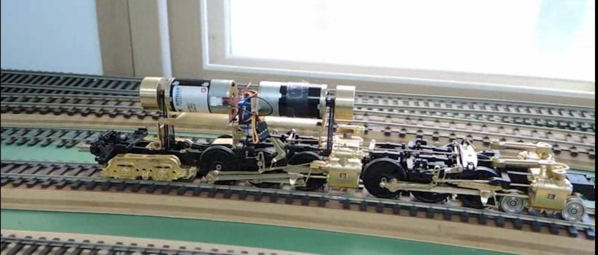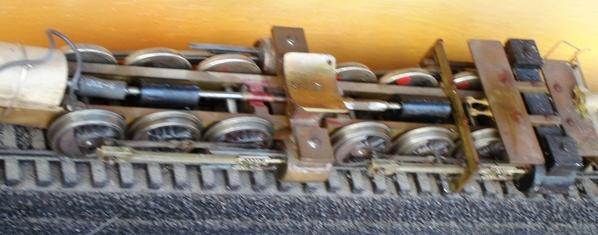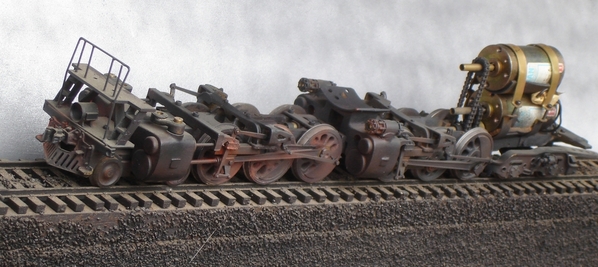Wow guys, that's advanced stuff! Two motors is surely the coolest thing in an articulate.
Bob, do you have a close up of that drive shafts? Looks magic! How do you get the front engine supplied?!
Looks like we're in the same kind of trouble :-) I still work on the gear ratio for my Challenger.
There are so many things to consider! Speed, Power, Space, Noise
So far I tried a Faulhaber 2342 but found it a bit small.

Also the ratio is too low. The wheels turn too fast at that low voltage. I try to be in the 1:25 / 1:30 range, that would mean nice slow speed and still some 50 scale miles at 5000 rpm.
That's my space concept for the bigger Faulhaber 2642. First I thought that a gear head would be a cool thing but I think it could be quite noisy so I now try to figure a way to get the power reduced with a timing belt / pulley arrangement.

Kohs Challenger - technically perfectly done! Note the not huge motors by Pittman


























